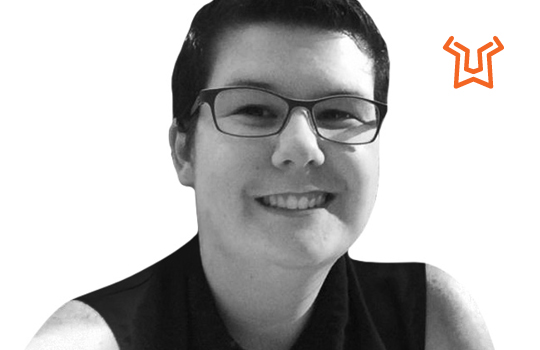- WHAT WE DO
Additional Services

- Industries

Case Study: Multilingual Retail Marketing
New AI Content Creation Solutions for a Sports and Apparel Giant

- RESOURCES

- WHO WE ARE

What We Do Home
Generative AI
- AI Translation Services
- Content Remix
AI Data Services
- Aurora AI Studio™
Machine Translation
- MT Tracker
Instant Interpreter
Customer Onboarding
Translation Service Models
Content Services
- Technical Writing
- Training & eLearning
- Financial Reports
- Digital Marketing
- SEO & Content Optimization
Translation Services
- Video Localization
- Software Localization
- Website Localization
- Translation for Regulated Companies
- Interpretation
- Instant Interpreter
- Live Events
- Language Quality Services
Testing Services
- Functional QA & Testing
- Compatibility Testing
- Interoperability Testing
- Performance Testing
- Accessibility Testing
- UX/CX Testing
Industries Home
Life Sciences Translations
- Pharmaceutical Translations
- Clinical Trial Translations
- Regulatory Translations
- Post-Approval Translations
- Corporate Pharma Translations
- Medical Device Language Services
- Validation and Clinical
- Regulatory Translations
- Post-Authorization Translations
- Corporate Medical Device Translations
- COA Translation Services
Banking & Finance
Retail
Luxury
E-Commerce
Games
Automotive
Consumer Packaged Goods
Technology
Industrial Manufacturing
Legal Services
Travel & Hospitality
Insights
- Blog Posts
- Case Studies
- Whitepapers
- Solution Briefs
- Infographics
- eBooks
- Videos
Webinars
Lionbridge Knowledge Hubs
- Positive Patient Outcomes
- Modern Clinical Trial Solutions
- Patient Engagement
- AI Thought Leadership
SELECT LANGUAGE:
This is the second piece in our new Patient Engagement series, where Lionbridge Life Sciences experts discuss the history and current status of participants in clinical studies and patients in the healthcare system. Come back every week for more from our team and get in touch if you have ideas of your own to share.
Our Life Sciences Subject Matter Expert and Director of Regulated Life Sciences Solutions, Pia Windelov recently interviewed Lotte Klim - a patient expert and EUPATI Fellow - to understand how the principles of Patient Engagement are experienced from a patient’s point of view.
EUPATI (The European Patients’ Academy on Therapeutic Innovation) is a public-private partnership offering education of patients and patient representatives with the dual mission of improving medical information for patients and creating meaningful contributions to research and development of medicines. Lotte is one of only 150 patients who have followed the patient expert education program at EUPATI since 2014 and graduated as a EUPATI Fellow.
As a person living with type 1 diabetes and a trained patient expert under the EUPATI academy, Lotte brings rich experience on how patients can help research scientists, regulators and the medical community develop therapeutic interventions that address ‘real-life’ patient needs and improve communication.
Pia: Thank you very much for being here and helping us shed light on the concept of Patient Engagement.
Can you explain what a patient expert is and what it means to be a EUPATI Fellow?
Lotte: A EUPATI Fellow is a person – often a patient - or a patient advocate who completes the 15 month EUPATI Patient Expert Course which focuses on the end-to-end R&D process of medicines. EUPATI Fellows can actively contribute to all research and development phases of medicines based on their lived experiences and unmet medical needs, and they serve as partners to academia, industry and regulators.
The EUPATI Course is very dynamic and has been expanded to include medical devices. From a patient perspective this is absolutely fundamental because medical devices may be equally as important for managing medical conditions as any pharmaceutical product. The education program is non-disease-specific and allows for knowledge sharing and building a strong network of well-educated and experienced patients.
Pia: As a EUPATI Fellow, how do you contribute to clinical research and patient engagement?
Lotte: I use my knowledge from the EUPATI Patient Expert Course to provide insights to researchers about my life and the lives of my fellow patients. The skills I obtained from the EUPATI program allow me to be very specific in my contributions because I understand the purposes of each phase of the research and development path of medicines and can address these in detail.
We do see that if patients do not grasp the focus or frame of a particular R&D process, then we end up with patients “only” telling their disease stories. These stories are all important but may be less useful when discussing patient relevant endpoints or go/no-go scenarios in a clinical trial. Therefore, it is important for all stakeholders that patients understand the terminology, basic methods, the steps and structure of the R&D process as well as the regulations. Building capacity in the patient community enables us to have patients who can help ’translate’ real-life experiences into scientific language, prioritize methods and bridge the gap between clinical and patient relevant measures. It is not about patients altering all decisions but rather contributing to the discussion of what is relevant and meaningful and putting this into an R&D framework.

Pia: Are there different types or levels of patient involvement in clinical research or in drug development in general? How do they differ?
Lotte: Yes, there is a clear difference as to which patients serve different tasks best. I want to make it absolutely clear that all patients – regardless of knowledge of the R&D process – have valuable insights to contribute because everybody has experiences from their lives with diseases and treatments.
You can think of patients as three different groups:
- Patients who on an individual level provide insights about their lived experiences and without any knowledge about R&D - or communication for that matter. This patient group is very strong at providing insights on unmet needs and at reviewing patient-facing information.
- Patient representatives who have broad insights into several issues across a given patient group. This group may be relevant for providing several perspectives and discuss what is more or less prevalent or important to a broader group.
- Patients (such as EUPATI Fellows) who in addition have a certain level of knowledge about R&D and are able to convey patient perspectives and needs into what is relevant for research, development, communication or regulatory aspects. They can be relevant in discussions on which clinical endpoints are most important to patients and relevant to present in for example a plain language clinical trial summary. Also, they can provide recommendations on commonly used disease-specific terms or expressions that are accepted by the patient community. Very often, there are differences between terminology accepted by patients and that which is traditionally used by scientists or health care professionals. Just think of the term “trial subject,” which has a lot of negative connotations and makes people think of guinea pigs in a lab. Using “participant” instead has a much more positive connotation and also speaks to the notion of an active contributor.
"In this way, language is very powerful but hard to balance if you do not know the local culture and acceptability."
Needless to say, patients are the key to this type of insights.
Pia: In your opinion, where are the most critical areas in clinical research or drug development where patient involvement is needed and can benefit both patients and clinical research progress?
Lotte: It is absolutely critical to work with patients from the very beginning and discuss which problems we need to find solutions for. It would be a great starting point to have a group of patients prioritize across research objectives – at least they are able to prioritize which challenges are most severe or burdensome from a patient perspective. This patient input should be the starting point for any research. From here, patients can provide valuable and time/cost-reducing input to the design of a trial, ethical considerations, engagement plans, informed consent form and any other patient facing information – and of course help prioritize patient-relevant content for a plain language results summary. Also, review in local language is highly important in order to meet the differences and sensitivity across countries or patient populations which I think this is very often overlooked.
Pia: Are you ever involved in giving input to patient content for clinical trials?
For example, have you consulted on Patient Reported Outcomes questionnaires, Patient Informed Consent Forms, Patient Information Sheets, Plain language Summaries or other types of content?
Lotte: Yes. I work across industry (pharmaceutical and medical devices), academia and regulators and I have provided input to a broad variety of materials and tasks. I have co-developed Patient Reported Outcome questionnaires because we realized that existing and commonly used questionnaires were outdated and no longer reflected the patient situation. We have to be aware that a lot of validated questionnaires were validated in the past where the focus was mostly on whether the reader literally understood the questions. But no-one asked if the questions were relevant to the patient or the cultural context in which they existed and that also has a huge impact on how people answer questionnaires. Equally, mostly researchers, doctors or other health care professionals developed the questionnaires and therefore missed the perspective of patients. So I would love to see future questionnaires validated by relevance to patients.
Lately, I was also involved in developing the Good Lay Summary Practice Recommendations, an initiative on clinical trial results summaries under the EFGCP (European Forum for Good Clinical Practice) and EFPIA (European Federation of Pharmaceutical Industries and Associations). The initiative raises the perspective of patients and what can be done to make sure that such summaries are both readable and meaningful. In addition, I have reviewed Package Leaflets for the European Medicines Agency. Again, I’m very happy that the agency does consult patients although sometimes it is a challenge to change very much, because certain terms or expressions are fixed or agreed upon. But the interest is certainly there.

Pia: In which areas do trial sponsors do well when communicating effectively to patients?
And where do they need to improve, in your opinion?
Lotte: I see a lot of efforts in communicating in plain language across all patient-facing information – in writing, videos or cartoons. I really like that sponsors want to meet their audience – and especially I’m very happy when sponsors reach out directly to children. It’s an amazing way to empower children because communicating directly to children at their level of understanding also builds trust in the child that (s)he is able to manage the situation. It must be well-balanced, of course, but being a child with a disease and maybe taking part in a trial is not a minor thing and it’s an opportunity also for the child to grow – especially if we’re talking about chronic or long-term conditions.
In terms of where sponsors can improve, I believe it is in their communication during and after trial participation.
"Most patients say that they would like to have the final results but unfortunately most participants never hear back from sponsors."
So that’s one very low-hanging fruit and from an ethical perspective the only right thing to do.
Another emerging area is communication with patients during trial participation. Frontrunners in this field ‘of course’ provide patients’ individual data for some examinations, lab tests and even lifestyle recommendations if patients have signed up to receive this information. This is a highly valued kind of communication which shows impressive effects on the patient retention rate as well.
Pia: How far has Patient Engagement come in your patient expert view?
Which opportunities and challenges you see in the future for patient engagement and for obtaining clinical outcomes that are valuable from a patient perspective?
Lotte: The area of patient engagement is still changing, and we need to ensure that we keep moving. We have moved beyond patients providing feedback to also feed their input forward into R&D, which is a good thing. But we do not yet have any standard procedures or minimum requirements which we need to develop to make sure that engagement is not only a tick box activity.
One challenge is that there are not yet enough educated patients in all disease areas. Another challenge is that sponsors lack knowledge of when and how to work with patients to obtain relevant and useful input. And third – we lack regulation that requires documentation of what are the most patient-relevant outcomes and where to place these findings in the hierarchy among clinical outcomes.
In conclusion, all stakeholders need to improve on patient engagement and bear in mind that the aim is never patient engagement in itself. It is about what is needed to ultimately improve patients’ lives.




